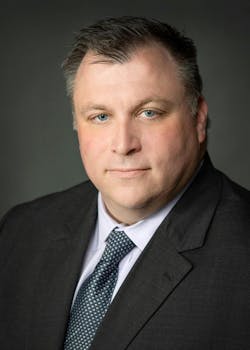As Firehouse Sees It: Fire Station Fires...It Can Happen to You
July 29, 2024
4 min read
The popular saying, “It won’t happen to us,” is something that the fire service knows all too well in conjunction with dealing with a family who suffered a fire loss, someone who was involved in a life-altering crash and a life-ending EMS run. We are well aware that firefighters aren’t immune. Neither is their residence nor their home away from home.
Unfortunately, when it comes to fire prevention and built-in protection for fire stations, it seems that the it-won’t-happen-to-us mentality still is there. In the past months, fire damaged or destroyed numerous stations. These fires resulted in some close calls for members, who were asleep or unaware of the fire.
A handful of times in past years, firefighters were quoted along the lines of “Luckily, I woke up, and then I smelled the smoke.” The reports rarely indicated presence of smoke alarms or other systems in the station. Sometimes, it’s difficult to sniff out smoke with the lingering smoke smell from a previous good job.
Fire chiefs and those who oversee their community’s public safety resources must raise awareness of the importance of smoke alarms, sprinklers, kitchen fire-safety measures and other systems in their own fire station. Of course, these efforts come at a cost, but that’s far less significant than the loss of a life or what’s required to rebuild a station and/or to procure apparatus and equipment to continue to provide protection.
Difficult to get over
I interviewed several fire chiefs over the years who had stations damaged by fire, and it put them in a precarious position where they had no means to keep watch over their community and had to scramble to put together protection. One chief told me that it was the most helpless feeling of his 30-plus-year career when he and firefighters were stuck standing around waiting on mutual aid. When I did a follow-up story two years later, he said that the members still were rattled. They felt that they failed their community and still were operating with limited resources out of a former county garage that was miles outside of their district.
There’s a need for contingency plans for natural and human-made disasters—e.g., a plan for a fire at your station and a list of items that you need to navigate. It isn’t just finding a new facility but the purchase or borrowing of equipment and legal work for that, too.
Last month, a Staten Island FDNY firehouse was hit by a fire, which likely was caused by an area power outage. Members just returned from a run and were lucky enough to be able to use a hydrant that was outside of the station to get water on the fire. In May, an overnight fire in a Los Angeles County station led to a close call where crews narrowly escaped. Dressed in shorts, T-shirts and slides, members tried in vain to protect any unburned resources but lost that battle.
Both of these departments have the resources to continue fire protection, although from an alternative location and using different equipment and gear. What about the small one- and two-station departments that might operate with limited excess resources? They might not have the redundancy nor backups that are necessary to continue to provide service. Many times, the stations that are in rural areas burn unnoticed until everything is lost.
You must understand what resources you have for insurance and reassess them annually as values and costs increase. Scope out a new place to operate from, including housing apparatus if you’re in an area that has extreme climates. You’ll need to procure new equipment amid current historic order delays.
Do you have a punch list for what you need to navigate? Do you have the legal work that would go with a loaner apparatus or gear? Where do you get SCBA and then fill them? If your paper records are stored in file cabinets, ensure that you have the records stored somewhere offsite or on the cloud, too. Without that backup, you could be put months behind.
If your station doesn’t have built-in protection, the first step is to add smoke alarms throughout the facility, particularly at entrances to sleeping and living areas to protect those who are resting during a long shift, and in kitchens.
About the Author
Peter Matthews
Editor-in-Chief/Conference Director
Peter Matthews is the conference director and editor-in-chief of Firehouse. He has worked at Firehouse since 1999, serving in various roles on both Firehouse Magazine and Firehouse.com staffs. He completed an internship with the Rochester, NY, Fire Department and served with fire departments in Rush, NY, and Laurel, MD, and was a lieutenant with the Glenwood Fire Company in Glenwood Landing, NY. Matthews served as photographer for the St. Paul, MN, Fire Department and currently is a photographer for the Fort Worth, TX, Fire Department.
Sign up for our eNewsletters
Get the latest news and updates

